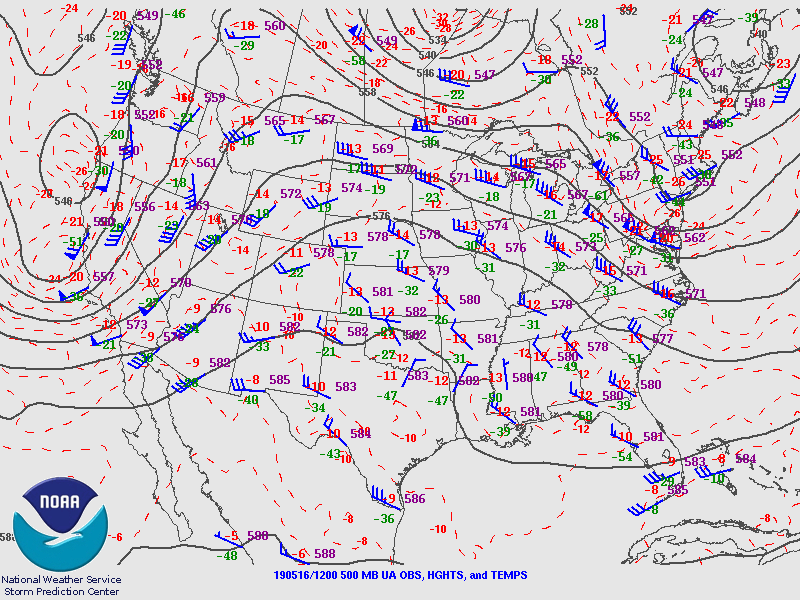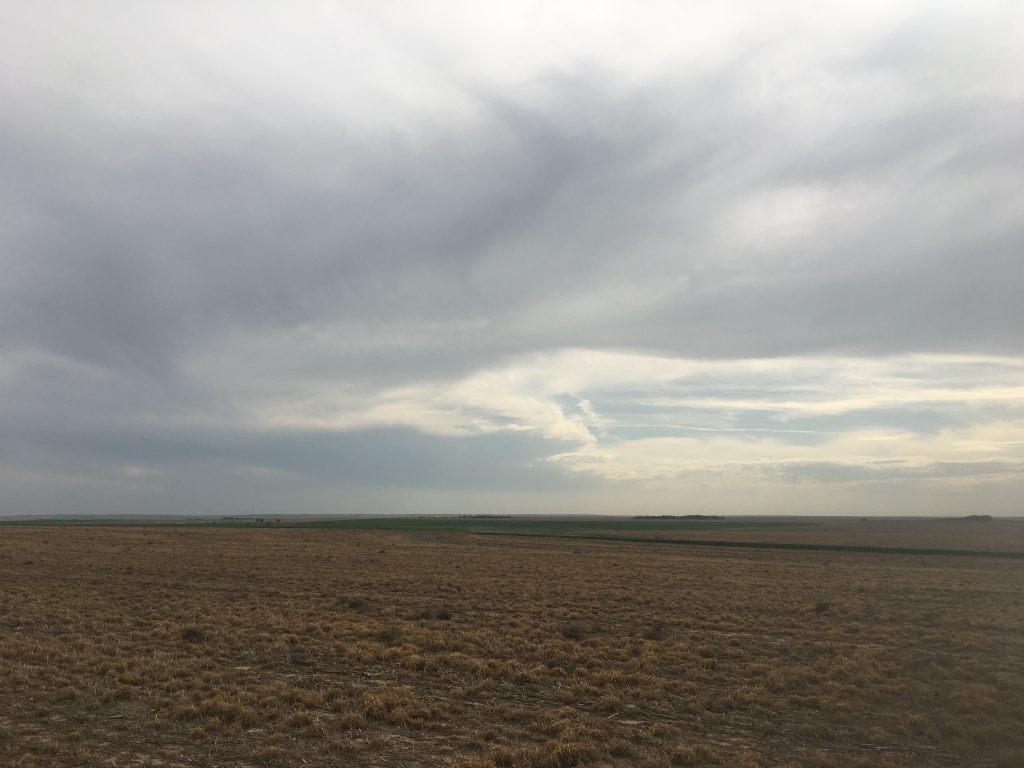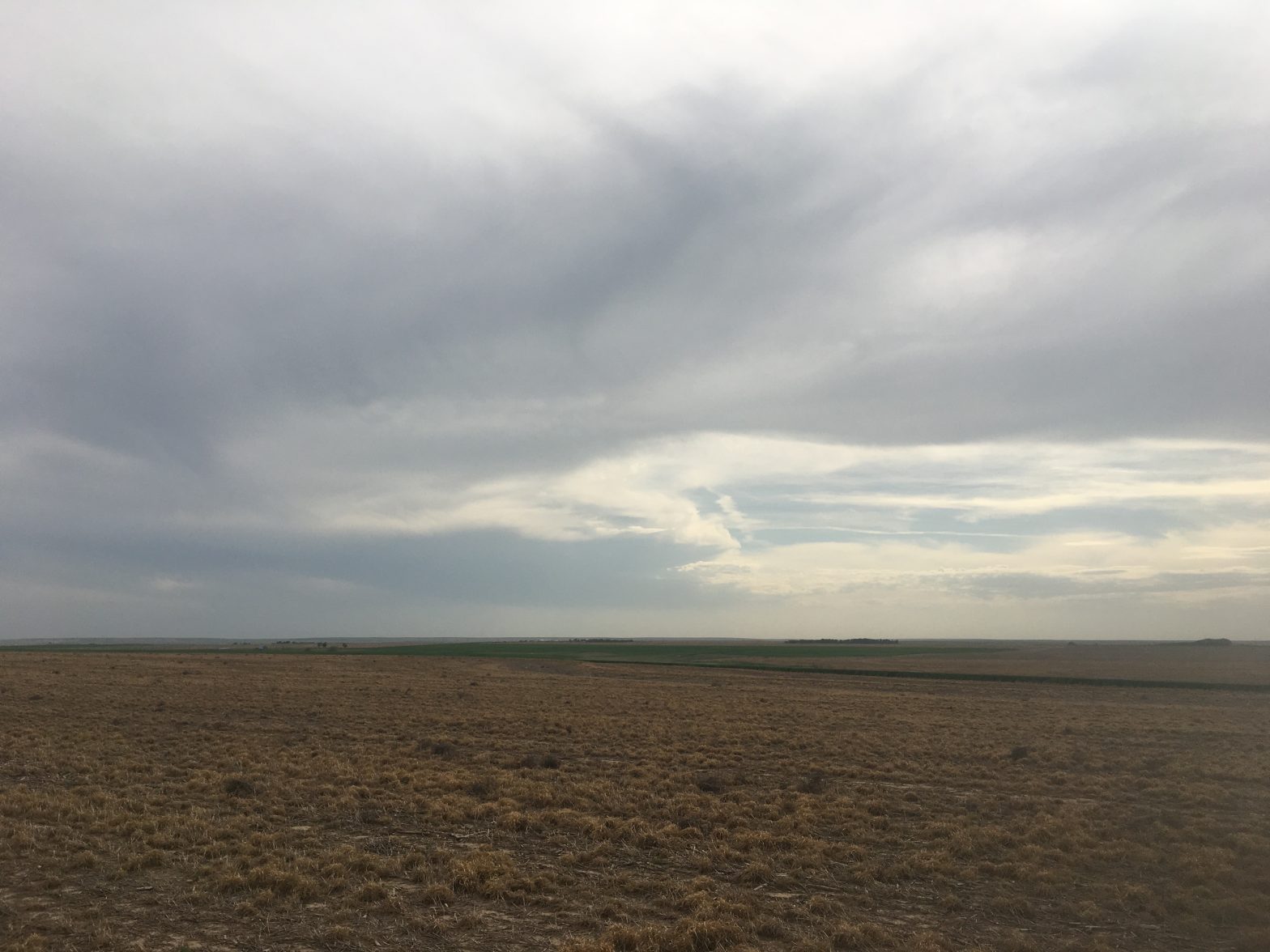As an undergraduate member of TORUS, I was only around for the duration of May. In some respects, that meant I felt the clock ticking from the moment our deployment window opened. Given that, May 15 and 16 could have come across as real bummers. Packed firmly under a 500 mb ridge, there was clearly no organized convective potential on the Southern Plains.


But… if you take a look on the 12z map from May 16, it becomes pretty clear that all hell was about to break loose in Tornado Alley. An amplified trough in late May, blocked by an amplified ridge? It was about time for a severe weather sequence. The Storm Prediction Center, recognizing as much, outlined the potential for severe weather in each day of its 4-8 day outlook for the first time ever, including a fairly significant chance of severe weather on May 17.

Media Day on the 14th had been abuzz with the potential for deployment after deployment. Instead of stressing about a lost day when I woke up on May 15, I felt growing anticipation. Mike had invited me up to his office at the NWC so that we could remotely join the TORUS map discussion. When we joined the call, it became clear that most researchers believed May 17 could be the real deal. The general idea was that a cyclone would form on the High Plains during the day, with a warm front lifting into Nebraska and a dryline right through the heart of the Plains. Mike and I had been eyeing the Texas panhandle the day before, and we continued to believe that the southern extension of the dryline could go big-time. Nebraska’s researchers were pushing harder for the warm front play to the north. Nothing had to be decided right at that moment, but general consensus was that we could congregate somewhere in Kansas on the 16th. For the time being, I was no longer a researcher, just a kid who’s summer break had just begun.
Toward mid-afternoon, I made one more trip to the NWC to practice launching soundings from a mobile mesonet. Given time/budget constraints, we had multiple people there to watch and help Sean give the demonstration, and I probably absorbed less than 50% from it. Open the helium tank with a wrench, prep the sonde in the truck, get the regulator on the helium tank, stick the balloon bag on the ground, put a balloon in the bag and inflate it, loop the balloon with the sonde and tie it off, and launch the balloon. Easy peasy, right? I spent the entire rest of the day terrifying myself that I was going to screw up in a high-stakes deployment.
The next morning, Elizabeth and I returned to the National Weather Center with suitcases packed for an indefinite stay on the Plains. Where were we heading? No clue! High-resolution data was suggesting that we wanted to lean further north than we had originally planned for the May 17 target, so instead of planning to meet the rest of the team in Dodge City like we planned, plans were laid to meet up in the afternoon in Wakeeney, Kansas. I steered the truck toward I-35, and this time TORUS began for real.
We fought construction off and on until leaving the interstate in exchange for the “Northwest Passage” near Geary. There’s something really pretty about the Great Plains, once you get away from the people and the other cars and the trees. Sunshine as far as the eye can see. Just the highways, the memories of days past at each crossroads, and the promise of more memories in the future. 2019 had been wet so far. Fields that in years previous had yellowed as spring faded to summer were now startlingly green and bursting with flowers.
Lunch was at a Taco Bell/KFC combo in Woodward. Our first real deployment, and I already felt like a stereotypical field researcher. Miles faded away, and US-283 led us from the rolling terrain of Oklahoma into the stark flatness of Kansas. The most entertaining moment of the drive up occurred when Sean Ernst, who commonly gets a little too enthusiastic about things, started yakking on the all-OU radio frequency and got himself a rebuke from Erik. That drive was the first, and only, time that people consistently used the OU radio frequency during the month of May.
After 48 hours away from the rest of the TORUS group, we finally came back into contact with other teams in northern Kansas near I-70. There was an all-teams practice deployment that afternoon. The Lidar team’s job was to link up with the CU-MURC, establish contact, and get the lidar up and running. I asked Mike if we could run a practice sounding launch, that being my most important job during deployments. He agreed.
The MURC was for some reason miles from the Interstate on a low-maintenance road south of Collyer. Mike and Liz both have degrees of carsickness, and I was basically trying to navigate a small tank across the landscape of the moon. We finally found them and deployed the lidar into the late-afternoon Kansas sky. It kinda worked, since there was some elevated convection occurring in the moisture return.

Here’s a link to my very first balloon launch: https://www.youtube.com/watch?v=Ln1dyiC9RAI
Kind of a rough first go. I struggled to get the helium tank open (righty tighty lefty loosey, dammit), the sonde took longer to prep inside the truck than I thought, and you can see the moment where Mike and I fight the antiquated zip ties we were using for way too long. But the sounding went up, so I was 1 for 1, and I felt a lot better afterwards.
Because the target was sliding further north and the MURC was inexplicably far from the highway, we got to our lodging in Colby, Kansas pretty late that evening. It was a beautiful evening, and after checking into the Holiday Inn a large contingent of OU researchers decided to walk out to dinner at El Dos de Oros. This was my first experience with an unintended consequence of field research campaigns: local stimulus for small towns that aren’t always prepared for it. The poor staff of this restaurant must have thought their day was pretty much done at 8:00, when all of a sudden several dozen chatty scientists walk in. On the plus side, we were all on very generous per diems, so the staff at places we visited got tipped well. I, uh, tried a thing:
It wasn’t horrible, which is kind of what I expected from something literally called a banana margarita. It was basically just a margarita with banana liqueur added, but I’m not picky. The restaurant was lively the entire time we were there, with stories from days past, complaints, and speculation about the next day’s deployment.
By the time we walked back to the hotel, it was fully dark. Travel days are always exhausting, and I retired to the room with my temporary roommate, Glen. After some writing in my journal, it was time for bed. As they say, sleep is precious on a field campaign, and tomorrow promised to be a big start.
